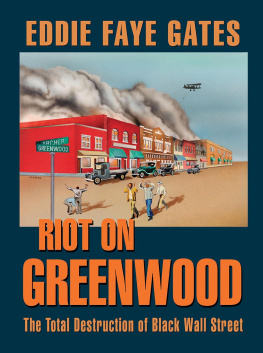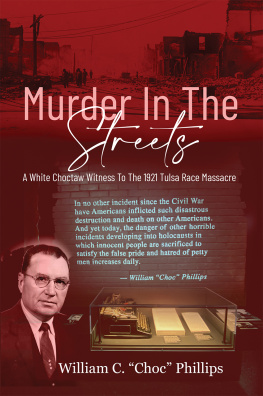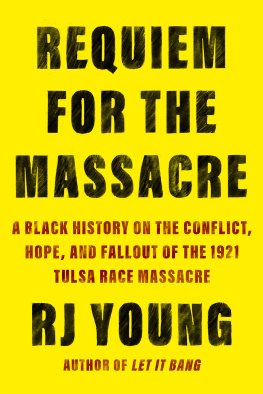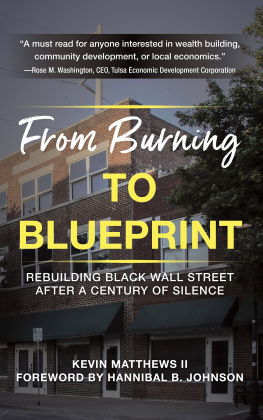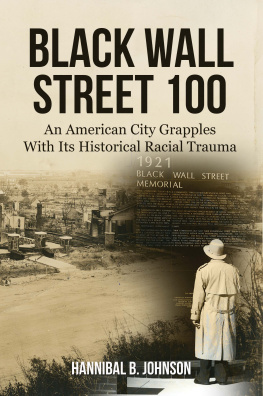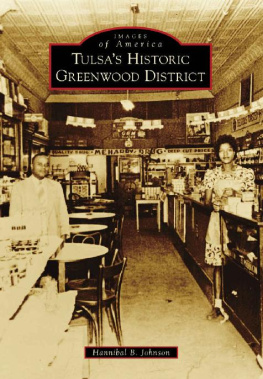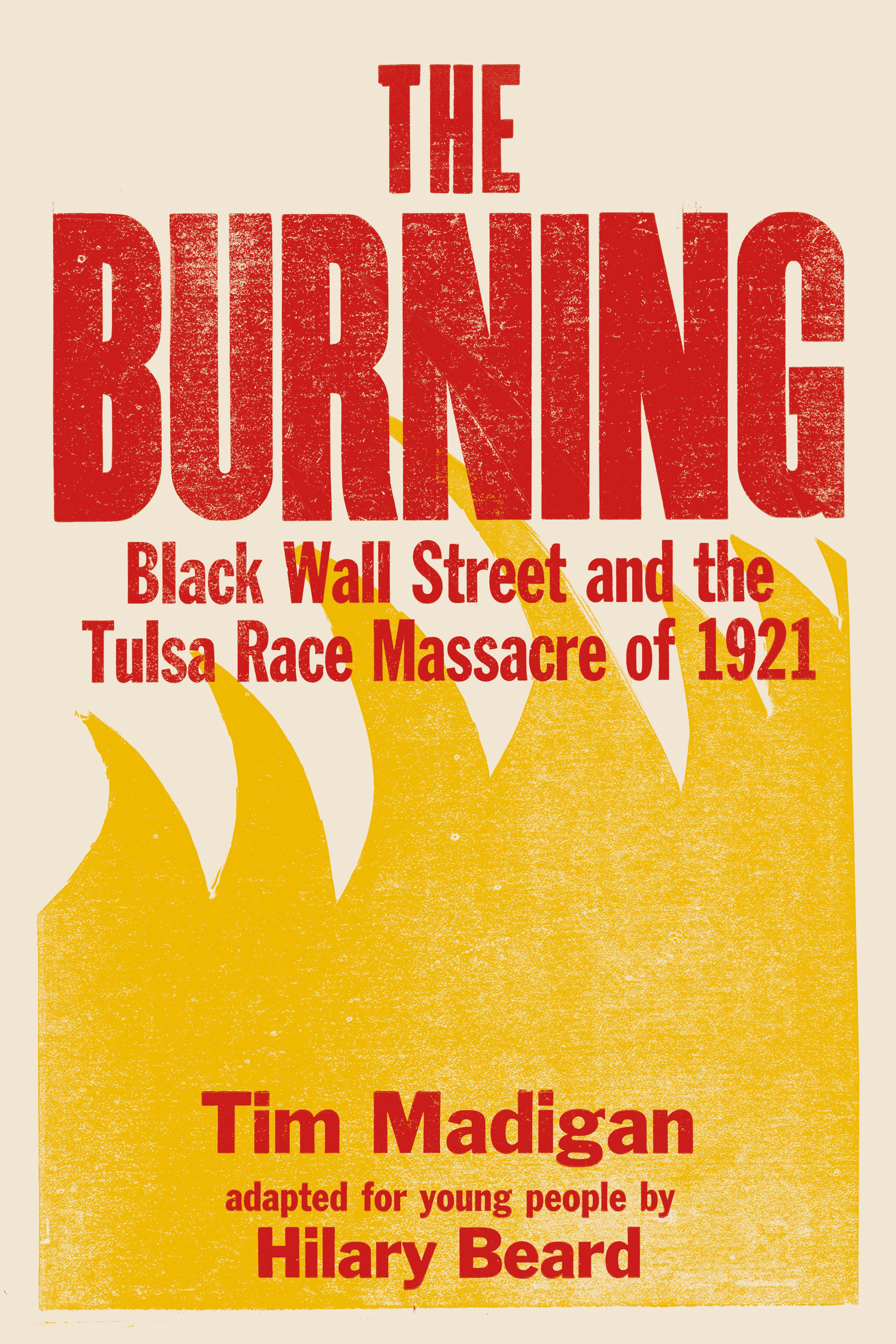The author and publisher have provided this e-book to you for your personal use only. You may not make this e-book publicly available in any way. Copyright infringement is against the law. If you believe the copy of this e-book you are reading infringes on the authors copyright, please notify the publisher at: us.macmillanusa.com/piracy.
When I first received the invitation to adapt The Burning for young readers, I was intrigued by the opportunity to help share an account of the Tulsa Race Massacrea story that simultaneously encompasses one of the great horrors of American history and the tremendous bravery, heroism, and industry of African American people. As someone who didnt appreciate American history until her mid-twenties, I knew that the subject had often been taught in a way that omitted, distorted, and sometimes intentionally misrepresented the experiences of Indigenous, Black, Latinx, Asian, and other Americans of color. I wanted to help fill some of the holes in the narrative.
Upon reading the adult edition of the book, I immediately developed a deep respect for the author, Tim Madigan, with whom I hadnt yet spoken. I discovered that Tim, a White male journalist, had stumbled across the story and was astounded that hed never heard of it. He then dedicated years of his life to researching and writing about the massacre, helping to bring this momentous historical incident to both the publics attention and, vividly, to life.
As a writer, I was blown away by both the quantity and quality of Tims research. I could see how carefully hed pieced his investigation together, his attention to detail, his craftsmanship in constructing the story, and his skill and artistry as a writer.
At the same time, as an African American, as a woman, as a person with deep family roots in the Midwestand as one who has researched her own ancestry to better understand herself and her own family storyI saw that Id have the opportunity to add some additional context and a new perspective. I wanted to frame the story a bit differentlyto look at that same world through a Black womans eyeas best as I could from a distance. I wanted to provide some additional insight into the experiences Black people had endured during Reconstruction and the Nadir of American history, a time period that includes the eras often described as the Gay Nineties and the Roaring Twenties. Gay for whom? Not for Black people.
As I read Tims work, it dawned on me that the early chroniclers of the event were mostly White, male, and in positions of power. And as I read about all the accomplished men of Black Wall Street, knowing the role Black women have played in Black life and liberation and the unfolding of American democracy, I wonderedwhat was going on in womens lives? What were the womens contributions to Greenwood in general and Black Wall Street in particular? Though my primary job was to make the book shorter, I attempted to weave in a few new narratives.
COPING WITH HARD HISTORY
Going into the project, I had what Id believed to be a decent amount of knowledge about the Tulsa Race Massacre. But the more I read, the more I realized how much I didnt know. Though Id read about White-on-Black mob violence and had studied several recent reports about lynching published by the Equal Justice Initiative, I realized that Id never read about White mob terrorism or an attempted lynching in detail. As a writer I often have a somewhat vivid imagination, but I could never have imagined such astonishing hatred, depravity, and cruelty. Shock, anger, hopelessness, despair, powerlessness, and grief coursed through mesometimes all at the same time.
These stories certainly were not the ones Id learned in history class that emphasized continuous racial progress. This is hard history, and its important to learn and talk about. But to be honest, some days I felt a little numb. Some moments I struggled to continue reading; others I found myself staring at the ceiling, trying to take it all in. Sometimes, I felt tightness in my throat and chest and queasiness in my stomach. Other times, I felt tingling in my legs, as though I needed to stretch or run. When I felt this, I would do yoga, allow myself to go for a walk or go swimming. Still other times, my neck and shoulders tightened up as I took in the information. And on a few occasions I wanted to close my eyes and go to sleep. Several times I cried. That said, some of my tears mourned the horror that many of my ancestors endured, while others praised their amazing vision, resilience, endurance, commitment, patriotism, and ingenuity.
So if you feel sad, or confused, or angry, or shocked, or powerless, or any of the infinite combinations of emotions one may experience upon learning about a tragedy, you are perfectly normal. Our emotions are part of what make us human. Expressing rather than suppressing them helps to keep us healthyspiritually, mentally, and emotionally. In fact, all the emotions and physical sensations you may experience while reading this book are completely normal. If its appropriate, dance around, look for the rooms exits, shake your body out, do some jumping jacks, go for a walk, put your head down, close your eyes. You may even need to take a nap. Its all normal. If youre reading this in school, you may want to ask your teacher if you can have a moment to shake it out.
Importantly, the discomfort that difficult emotions create can cause you to understand yourself and the world differently. Our uncomfortable emotions can help us open the door to new possibilities. You may be inspired to learn more about a particular aspect of this history. I found myself consumed with Reconstruction, an era I hadnt found particularly interesting before. I wondered about my ancestors experiences and began to research them more deeply. You may want to ask your parents or grandparents about their family stories. However these stories affect you, I hope that after learning more about what Black Americans have facedand continue to face to this dayyoull commit yourself to racial justice and anti-racism work.
A WORD ABOUT VIOLENCE
A lynching is a savage act. Mob violence is barbarous. This massacre, the largest act of homegrown terrorism ever perpetrated in the United States, was extraordinarily, horrifically, more violent than I had even imagined. In this adaptation Ive attempted to find a balance between overly sanitizing what happened and lingering needlessly on gruesome acts. Though you undoubtedly have seen lots of violence in movies and on various mediaI worried about how the details of Black people being so brutally victimized might land on Black children and parents, who already face an uphill experience of life and so much death in the media. I worried about how the reality of such pervasive White violence might impact White readers, most of whom have likely been taught a sanitized version of their role in American history. Since the story is about the often unspoken narrative of White vigilante violence, I also wondered how teachers would prepare to discuss it in class.
But the fact that something is upsetting to us doesnt mean that we should not engage it. Facing the truth empowers us to understand ourselves, our neighbors, and our world more accurately; to make appropriate choices and decisions; to heal our past and present and build a more promising future.


